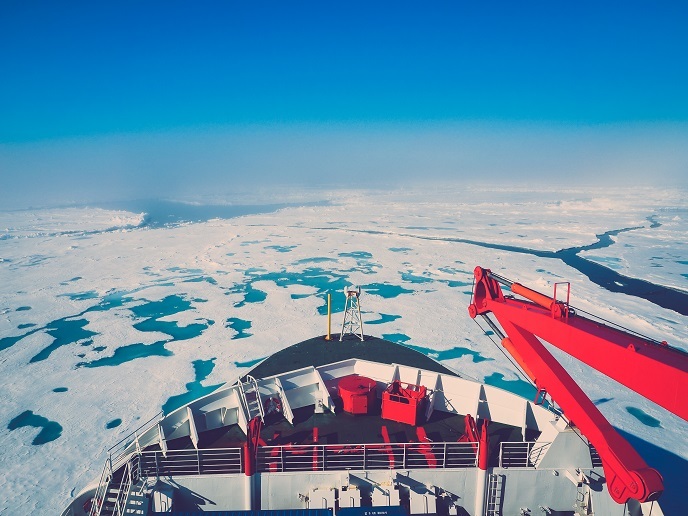Identifying ice loss ‘tipping points’ in Antarctica
The Antarctic ice sheet is the largest mass of ice on the planet. It holds over 60 % of the world’s fresh water(opens in new window) and spreads over an area almost twice the size of Australia. A key concern is that progressively warmer temperatures in the region have increased ice melt, causing glaciers to retreat and ice shelves to break apart, leading to global sea level rise. The TiPACCs(opens in new window) project was launched to shed new light on this situation, investigating the probability of abrupt, large changes in sea level contribution from the Antarctic ice sheet.
Point of no return
“A key focus was on the stability of the ice sheet itself, as well as on the possibility of it crossing ‘tipping points’ that could result in sudden changes in sea levels,” explains TiPACCs project coordinator Petra Langebroek from the Norwegian Research Centre(opens in new window) (NORCE) and the Bjerknes Centre for Climate Research(opens in new window) (BCCR). Langebroek coordinated the TiPACCs project together with Svein Østerhus, also from NORCE and BCCR. Langebroek notes that recent observations and modelling have confirmed a retreat in West Antarctica, especially in the region around Thwaites Glacier. This region is especially vulnerable because warm ocean waters can reach the ice there – other parts of Antarctica are protected by colder coastal waters. “We wanted to study the entire Antarctica ice sheet, and to check if these coastal shelf seas could switch from a ‘cold’ state to a ‘warm state’,” says Langebroek. “We also wanted to know if the ice sheet has or could become unstable – cross a tipping point – due to higher melt rates caused by this.” A key inspiration for this was a 2012 modelling study(opens in new window) by TiPACCs colleague Hartmut Hellmer, which simulated the intrusion of warmer waters into these ice shelf regions.
Implications for global sea levels
To do this, the project team used numerical models to describe the ocean, and to simulate the ice sheet. Coupling these models helped the team to determine how a ‘switching’ of the seas surrounding the Antarctic from cold to warm states might occur, what impact this might have on ice sheet integrity, as well as any resulting implications for global sea levels. “When we started this project, coupled models such as these hardly existed,” adds Langebroek. “Through TiPACCs, and other European projects such as PROTECT, we have been able to significantly advance our modelling techniques, and now have several coupled ocean-ice sheet models(opens in new window).” The project’s ice sheet models showed consistent results – that the present-day Antarctic ice sheet has likely not crossed a tipping point yet. “This means that the currently observed retreat is not due to a crossed tipping point,” notes Langebroek. “If this pattern continues however, the ice sheet will become unstable, with irreversible retreat likely, especially in West Antarctica.”
Advancing Antarctic ice sheet research
The project’s findings will now feed into global assessment reports, such as those of the Intergovernmental Panel on Climate Change(opens in new window) (IPCC). The team also created a policy brief(opens in new window), highlighting what it has learned, and what remaining knowledge gaps exist. For example, producing a holistic view of the Antarctic ice sheet and surrounding ocean, atmosphere and land is recommended. “I see this project as a huge stepping stone for further Antarctic ice sheet research,” concludes Langebroek. “The scientific knowledge gained through the project, especially the improved climate models, can help us to narrow down uncertainties in our projections of future ice loss.” The project has also made their results accessible, with videos and teaching materials. The project has developed a freely available Virtual Antarctica(opens in new window) tool, which enables anyone to learn about the frozen continent in an interactive manner.







